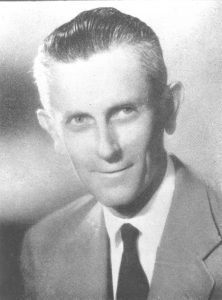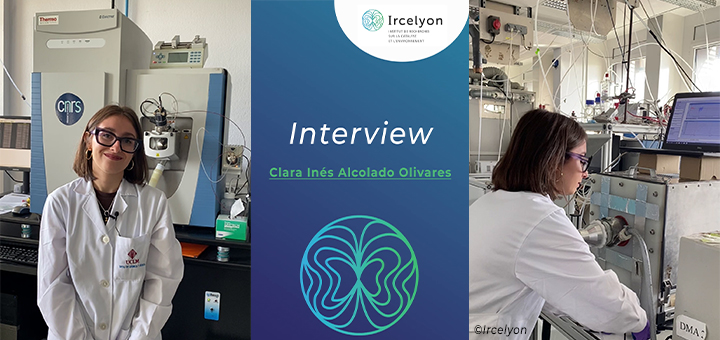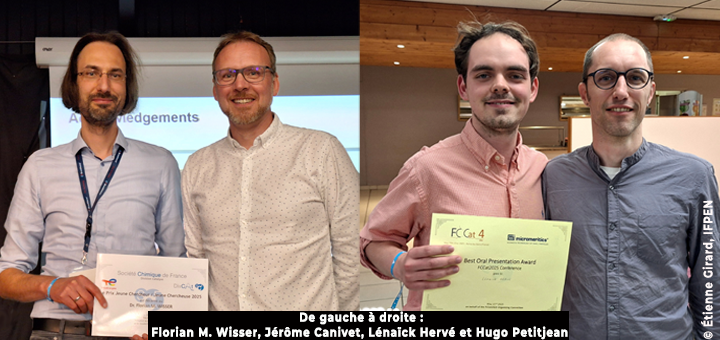A pioneering Research Institute on Catalysis
The Research Institute on Catalysis (IRC), impulsed by Marcel PRETTRE, was built in 1958 by the CNRS. Within three years, IRC reached a staff of 160 researchers, engineers, technicians and administrative staff. The objective of his fonder: “the analysis of the transformation mechanisms of matter” was achieved by developing at IRC the most advanced techniques. Over the years, the Institute has been a forerunner in the development of concepts and new fields in catalysis. Initially mainly dedicated to the development of catalysts characterization methods, research activities focused on types of catalysts, major reactions and industrial issues. IRC researchers spread their influence throughout France and abroad, creating new research team of laboratories. IRC became an attractive research Institute for foreign researchers and students. The Institute built continuously strong relationships with international research institutes on catalysis (eg.in Russia, Japan, China…).
From the beginning, the Institute promoted fundamental research with potential industrial applications. This spirit has been extended since mid-80’s. Therefore, the Institute has established strong partnerships with the major chemical corporations within collaborative research projects. Moreover, three joint research CNRS-Industry units have been created with a large part of their researchers originated from IRC.
In 2007, IRC merged with the LACE and became IRCELYON, a world-class research center dedicated to the overall understanding of catalyzed reactions applied to industrial and societal issues in the fields of Energy, Chemistry and Environment.

Marcel PRETTRE
(1905-1976)
Main organizer of the 1st international congress on absorption and heterogeneous catalysis in Lyon in 1949, director of the School of Chemistry of Lyon and the INSA chemistry department, Prof. Marcel PRETTRE is the founder and the first director of the Institute of Research on Catalysis.
His research focused on adsorbent solids and heterogeneous catalysts.
He himself had worked on Fisher-Tropsch synthesis or partial oxidation of methane.
His multiple awards and distinctions underline his key role in the history of catalysis
Selected highlights over the decades
Over the years, the Institute of Research on Catalysis has been a pioneer in the development of concepts and new fields in Catalysis.
60’s : understanding catalysis with physico-chemical methods
The initial spirit of the Institute based on the analysis of the transformation mechanisms of matter has marked its lifetime with the development of techniques dedicated to the study of the catalysts. Specific applications such as SAXS, magnetism, Mossbauer, neutron spectroscopies, ESR… were applied for the characterization of metals, sulphides or oxides and still now many in situ or operando methods are developed. Furthermore, as early as 1962, IRC researchers were working on catalytic converters or fuel cells that were not yet commercially existing.
70’s : first photocatalytic and catalytic hydrotreatment
Even if the remarkable properties of TiO2 have been previously noticed, the first photocatalytic reactions and fundamentals of photocatalysis on this oxide were carried out at IRC in the early 70’s under the leadership of S. Teichner. This specific domain of heterogeneous catalysis, working at room temperature is still a very active topic that found industrial applications in the 90’s.
Formenti M., Juillet F., Teichner S.J., Comptes Rendus Acad. Sci. (Paris), 270C, 138, 1970
In the late 70’s, under the impetus of IFP, IRC approached catalytic hydrotreatment and quickly became a reference in the field. Depth analysis of the reaction kinetics and the determination of Transition Metal Sulphides activities allowed to describe the reaction pathways and to understand the role of the catalysts.
Vrinat ML, Gachet CG, de Mourgues LD, J. Chimie Physique et de Physico-Chimie Biologique, 77(4), 283-288, 1980
80’s : Initiating surface organometallic chemistry
In the 80’s appeared also the emergence of surface organometallic chemistry developed by J. M. Basset. The design of well-defined single site catalysts deposited on a well-defined surface, this support acting as a rigid ligand. This concept, bridging the gap between homogeneous and heterogeneous catalysis, has been applied to many “difficult reactions” as well as a tool for preparing well designed heterogeneous catalysts.
Smith AK., Besson B., Basset JM and al., Journal of Organometallic Chemistry, 192 (2), C31-C34, 1980
90’s : Opening new dimensions: DFT application, catalytic biomass transformation
In the 90’s, the use of theoretical chemistry opened a new dimension to the understanding of catalysis by describing the sequential mechanism of reaction at the surface by also by anticipating the reactivity of new catalysts.
In this domain, IRC has been a pioneer, under the lead of P. Sautet, in the application of DFT for the elucidation of catalytic mechanisms as well as simulation of spectroscopies used for catalysts characterization.
Paul JF, Sautet P. Physical Review B, 53(12), 8015-8027, 1996 Besson M, Lahmer F, Gallezot P. Journal of Catalysis, 152 (1), 116-121, 1995
In the same period, IRC, under the impulse of P. Gallezot, initiated the development of catalytic biomass transformation, for instance in the catalytic oxidation or hydrogenation of glucose. This topic is nowadays an important aspect of academic and industrial heterogeneous catalysis research in line with the sustainability.
XX’s : Advanced Kinetics
Kinetic approaches such as isotopic exchange, TAP system for transient kinetic studies, micro kinetic methods based on the combination of FTIR and MS High-throughput experimentations were investigated. Micro catalytic tests for kinetic determination were licensed or sold in several countries.
Schuurman Y. Catalysis Today, 121(3-4), 187-196, 2007
Over the years, leading-edge equipment at IRC

IRC has a unique fleet of highly innovative devices since its creation: electron microscope, calorimeter, RX diffractometer, mass spectrometer, infrared spectrometer, magnetometer, NMR spectrometer, calorimeter, Electron Spin Resonance spectrometer, Brunauer-Emmett-Teller instrument, one of the three in the world at the time.

Over the years, IRC hosted leading- edge equipment: one of the first Mössbauer spectrometers in France, a solid NMR spectrometer for catalysts, the first HREELS spectrometer in France, the first X-ray photoelectron spectroscopy (XPS) dedicated to catalysis studies and the first Temporal Analysis of Products (TAP) in France…
Moreover, IRC technical experts developed also original instrumentations such as a small-angle X-ray scattering device (patented in 1965), thermobalance (from vacuum to 300 bars), ultra vacuum devices, and even a test bench of catalytic exhaust gaz purification, tested on a Dauphine Renault engine in the early 60’s!







